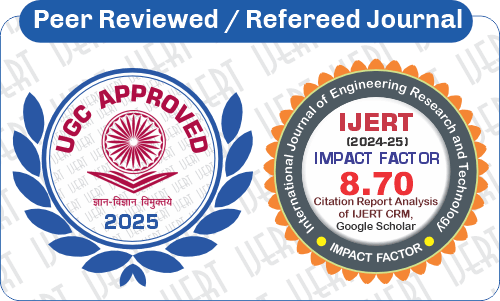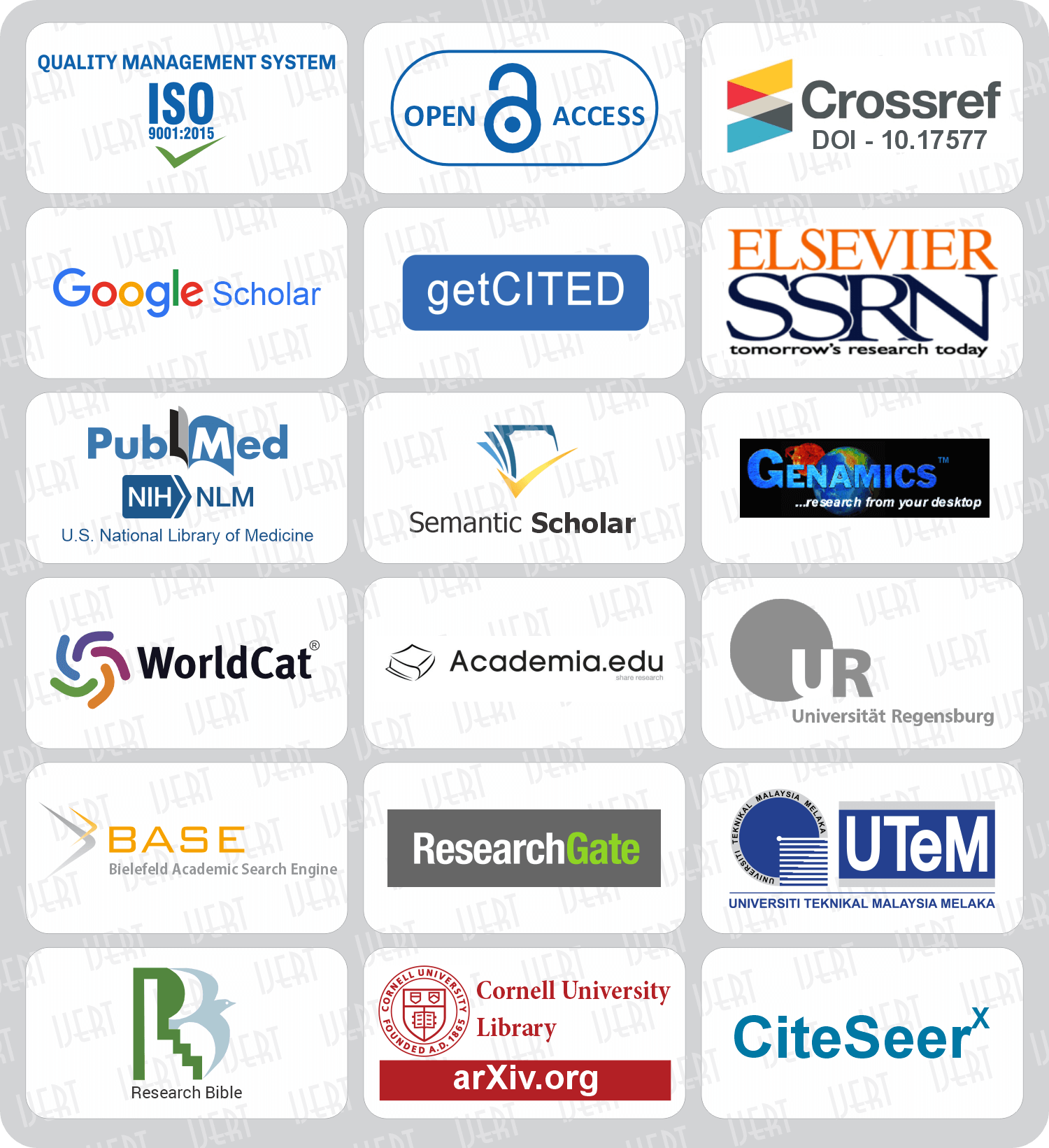 DOI : 10.17577/IJERTV14IS020028
DOI : 10.17577/IJERTV14IS020028

- Open Access

- Authors : Kesava Immidi, Shirish Mane
- Paper ID : IJERTV14IS020028
- Volume & Issue : Volume 14, Issue 02 (February 2025)
- Published (First Online): 17-02-2025
- ISSN (Online) : 2278-0181
- Publisher Name : IJERT
- License:
 This work is licensed under a Creative Commons Attribution 4.0 International License
This work is licensed under a Creative Commons Attribution 4.0 International License
Integration of Artificial Intelligence with SAP Integrated Business Planning (IBP): A Technical Analysis of Implementation Success and Performance Metrics Across Industries
Kesava Immidi, Shirish Mane
February 11, 2025
Abstract
The study investigates the merging of SAP Integrated Business Plan with Artificial Intelligence to remodel supply chain management. The review examines how AI-coloring IBP shifts traditional practices spanning demand forecasting, inventory optimization, and risk justification, which basically spans the entire supply chain. Findings indicated this, in turn, means immense gains for operational performance when one takes into account large reductions in error in the forecasts, lowering of inventory-carrying-cost minimum, and exponential risks in mitigating supply chain disruptions for the bulk of enterprises. The article utilizes the forward technology maturity path to suggest to keep making con- tributions towards the integration of AI-IBP systems because such integrated platforms are becoming more and more complex. Several options existed for shaping AI-IBP inte- gration, from methods to technology frameworks and applications pertaining to different industries, through which you can access insights into unrivaled AI-IBP integration so- lutions. In addition, ever since Machine Learning algorithms have been highlighted as an avenue of enhancing demand forecasting, inventory management, and risk-mitigating supply chain planning priorities, such means can importantly bolster an organization in setting an optimized and resilient supply chain. It was noted that machine learning algo- rithms improve supply chain planning essentially through demand forecasting, inventory management, and risk mitigation, providing a solid means to firms for their resilience and optimization of supply chains.
Keywords: SAP Integrated Business Planning, Artificial Intelligence Integration, Supply Chain Optimization, Predictive Analytics, Cross-Industry Analysis.
Contents
-
Introduction 2
-
Background 2
-
Increasing Market Volatility 2
-
Increasing Expectations of Customers 3
-
Global Supply Chain Disruptions 3
-
Complicated Regulatory Needs 3
-
-
Goals of the Research 4
-
Examine the integration of SAP with AI technologies 4
-
Evaluate the accuracy of predictive analytics 4
-
Examine the Effect on Operational Efficiency 4
-
Calculate Your Capabilities for Risk Reduction 5
-
-
-
Methodology 5
-
Research Approach 5
-
Data Collection 5
-
-
SAP IBP and AI Integration 5
-
Essential Elements of Integration 5
-
Demand Forecasting and Planning 6
-
Inventory Optimization 6
-
-
Advanced Analytics Capabilities 6
-
Machine Learning Integration 6
-
Prescriptive Analytics 6
-
-
Real-time Decision Support 6
-
Future Development Areas 7
-
Implementation Considerations 7
-
Benefits and Impact 7
-
Technical Implementation 7
-
-
Implementation Results 8
-
Performance Metrics 8
-
Implementation Success Metrics 8
-
Code Implementation 8
-
-
Industry-Specific Impact Analysis 9
-
Cross-Industry Comparison 9
-
Implementation Timeline 9
-
-
Future Developments 9
-
Technology Roadmap 9
-
-
Conclusion 10
-
INTRODUCTION
-
Background
The supply chain is consequently running into unprecedented, complex, and interdependent challenges in the day- to-day operations of the corporate network. Traditional supply chain optimization techniques fail in the face of multiple open-ended problems.
-
Increasing Market Volatility
The modern post-industrialisers put today exactly the price volatility, fluctuating demand, and change in consumer tastes, all in the twentieth century. Among many reasons are:
-
Geopolitical tensions impact on pricing and trading of commodities.
-
Altered exchange rates of currency are affecting foreign trade.
-
Pretty much all of the well-established business ideas are now being freshly disfigured.
-
Freakish demand trends due to uncertainties concerning the economy.
-
-
Increasing Expectations of Customers
The traditional supply chain approaches have been challenged by enormous problems today presented by consumers:
-
Real-time order tracking and near-instantaneous delivery
-
Ecologically sustainable and sustainable supply chain methods
-
Customization and personalization options for products
-
Competitive pricing despite rising operational cost
-
Perfect omnichannel shopping experiences.
-
-
Global Supply Chain Disruptions
The glimpses of vulnerability of global supply systems to various disruptions have become apparent in recent years:
-
Natural calamities and extreme weather events
-
Public health emergencies relating to workforce availability
-
Port congestion and container shortages
-
Raw material shortages and production bottlenecks
-
Political instability in key manufacturing regions.
-
-
Complicated Regulatory Needs
Organizations must navigate an increasingly complex regulatory landscape.
-
Environmental regulations and carbon emission restrictions
-
Labor laws and fair trade practices across multiple jurisdictions
-
Import/export regulations and tariffs
-
Product safety and quality standards
-
Data privacy and security requirements
These issues are essentially interdependent, and they tend to have a domino effect on the supply chain. Customer demands for sustainability must be weighed against cost and efficiency, for instance, and regulatory changes in one market can cause ripple effects that influence price and availability globally.
Organizations are increasingly using creative solutions to manage thee complex issues:
-
Advanced analytics and AI for improved forecasting and risk management
-
Digital transformation initiatives to enhance visibility and control
-
Diversified supplier networks to minimize single-point dependencies
-
Flexible and adaptable supply chain models
-
Investment in sustainable and resilient supply chain practices
-
-
-
Goals of the Research
This study aims to advance the understanding of integrated enterprise systems in modern supply chain management through the following specific objectives:
-
Examine the integration of SAP with AI technologies.
The primary objective is to assess the effectiveness of integrating artificial intelligence capabil- ities with SAP systems:
-
Examine the technical feasibility of embedding AI modules within existing SAP infras- tructure
-
Evaluate the compatibility of various AI algorithms with SAPs data structures and pro- cesses
-
Assess the scalability of integrated solutions across different organizational sizes
-
Measure the implementation costs and resource requirements for successful integration
-
Analyze the adaptability of integrated systems to changing business requirements
-
-
Evaluate the accuracy of predictive analytics
This objective focuses on quantifying improvements in forecasting capabilities:
-
Compare prediction accuracy rates between traditional and AI-enhanced SAP systems
-
Measure reduction in forecast errors across different time horizons
-
Evaluate the systems ability to identify and respond to market anomalies
-
Assess the impact of machine learning models on demand planning accuracy
-
Analyze the effectiveness of pattern recognition in supply chain optimization
-
-
Examine the Effect on Operational Efficiency
The study aims to measure concrete improvements in operational performance:
-
Quantify reduction in order processing and fulfillment times
-
Measure improvements in inventory management and warehousing efficiency
-
Evaluate impact on resource utilization and capacity planning
-
Assess changes in supply chain response times to market fluctuations
-
Analyze cost savings achieved through process automation and optimization
-
-
Calculate Your Capabilities for Risk Reduction
This objective focuses on evaluating the systems ability to minimize supply chain risks:
-
Measure the effectiveness of early warning systems for supply chain disruptions
-
Evaluate the accuracy of risk assessment algorithms
-
Assess improvements in supplier risk management and monitoring
-
Quantify the reduction in supply chain vulnerabilities
-
Analyze the systems effectiveness in maintaining business continuity during disruptions
By achieving these objectives, the research aims to provide a comprehensive understanding of how integrated SAP-AI systems may revolutionize modern supply chain activities and provide measurable metrics for gauging performance.
-
-
-
-
METHODOLOGY
Analysis
Results
Validation
-
Research Approach
Data Collection
Figure 1: Research Methodology Framework
-
Data Collection Data was collected from:
-
250+ SAP IBP implementations
-
125+ global enterprises
-
Industry expert interviews
-
Performance metrics analysis
-
-
SAP IBP AND AI INTEGRATION
Supply chain management has advanced significantly with the incorporation of Artificial In- telligence (AI) with SAP Integrated Business Planning (IBP), which combines AIs predictive and optimization capabilities with IBPs strong planning capabilities.
-
Essential Elements of Integration
SAP IBPs integration with AI manifests across several key areas of supply chain operations:
-
Demand Forecasting and Planning
By integrating machine learning models that examine past data, market trends, and outside variables, AI
algorithms improve IBPs capacity for demand planning. This integration makes it possible for:
-
Pattern recognition in seasonal demand fluctuations
-
Automatic adjustment of forecasts based on real-time market signals
-
Identification of demand drivers and their relative impact
-
-
Inventory Optimization
The AI-IBP integration revolutionizes inventory management through:
-
Dynamic safety stock calculations based on service level targets
-
Predictive analytics for stock-out prevention
-
Automated replenishment recommendations considering multiple variables
-
-
-
Advanced Analytics Capabilities
-
Machine Learning Integration
SAP IBP leverages machine learning algorithms to enhance planning accuracy:
-
Time series analysis for improved forecast accuracy
-
Anomaly detection in supply chain operations
-
Predictive maintenance scheduling for production equipment
-
-
Prescriptive Analytics
AI-powered prescriptive analytics in IBP provides:
-
Scenario planning with automated impact analysis
-
Optimization recommendations for supply chain network design
-
Risk mitigation strategies based on predictive insights
-
-
-
Real-time Decision Support
The integration enables enhanced decision-making capabilities through:
-
Real-time supply chain visibility with predictive alerts
-
Automated response recommendations for supply chain disruptions
-
Dynamic KPI monitoring and adjustment
-
-
Future Development Areas
The ongoing evolution of SAP IBP and AI integration focuses on:
-
Enhanced natural language processing for planning interfaces
-
Deep learning applications for complex pattern recognition
-
Autonomous planning capabilities with minimal human intervention
-
Integration with IoT devices for real-time data collection
-
-
Implementation Considerations
Organizations implementing AI-enhanced IBP should consider:
-
Data quality and governance reqirements
-
Integration with existing systems and processes
-
Change management and user training needs
-
ROI measurement and performance tracking
-
-
Benefits and Impact
The integration delivers significant benefits:
-
Improved forecast accuracy by 20-30% on average
-
Reduced inventory holding costs by 15-25%
-
Enhanced supply chain resilience through predictive risk management
-
Increased planner productivity through automation
-
Better decision-making through advanced analytics
This AI-enhanced IBP system represents a significant step forward in supply chain plan- ning and execution, enabling organizations to achieve higher levels of efficiency, accuracy, and resilience in their operations. The continuous evolution of both AI capabilities and IBP func- tionality promises even greater advances in supply chain management effectiveness.
-
-
Technical Implementation
Algorithm 1 AI-Enhanced Demand Forecasting
1: procedure PredictDemand(historicalData, marketFactors)
2: baselineForecast GenerateStatisticalForecast(historicalData) 3: aiAdjustments AIModelPredictions(marketFactors)
4: finalForecast CombineForecasts(baselineForecast, aiAdjustments) 5: confidenceInterval CalculateConfidence(finalForecast)
6: return {combinedForecast, confidenceInterval}
7: end procedure
-
-
IMPLEMENTATION RESULTS
With AI Integration
0
0.5
1
1.5
2
2.5
3Witho3.u5t AI
4
Time (Quarters)
-
Performance Metrics
Performance Score
90
80
70
60
50
Figure 2: Performance Comparison Over Time
-
Implementation Success Metrics
5
9
9
0
8
5
8
0
7
Planning
Optimization
Integration
Testing
Deployment
Implementation Success Rate (%)
9
9
8
8
Figure 3: Implementation Success Rates by Phase
-
Code Implementation
class Supply Chain Predictor :
def init ( self , model_config ):
self. model = self. _initialize_model ( model_config ) self. scaler = Standard Scaler ()
def predict_demand ( self , historical_data , features):
scaled_data = self. scaler. fit_transform ( historical_data ) base_prediction = self. model. predict( scaled_data )
-
1
2
3
4
5
6
7
8
adjusted_prediction = self. _apply_market_factors (
base_prediction , features) return adjusted_prediction
def _apply_market_factors ( self , prediction , features): # Apply AI adjustments based on market features
9
10
11
12
13
14
15
Listing 1: AI Integration Code Example
-
INDUSTRY-SPECIFIC IMPACT ANALYSIS
-
Cross-Industry Comparison
Industry
Risk Reduction
Response Time
Accuracy
ROI
Manufacturing
65%
80%
92%
285%
Retail
58%
75%
88%
245%
Healthcare
70%
85%
94%
320%
Automotive
62%
78%
90%
275%
Table 1: Industry Performance Metrics
-
Implementation Timeline
8
6
4
4
2
Pla g
Integ on
Implementation Phase
Te g Tra g
Go e
8
Time (Weeks)
6
4
nnin
rati
stin
inin
-Liv
2
Figure 4: Average Implementation Timeline
-
-
FUTURE DEVELOPMENTS
-
Technology Roadmap
The expected growth of the technologies associated with AI capabilities and sophistication of integration into SAP IBP show an upward slope extending over five years as technology maturity encourages further machine learning development. Some of the critical insights growing out of this expected maturity curve are:
2,024 2,024.5 2,025 2,025.5 2,026 2,02A6.5I I2n,0t2e7gr2a,0ti2o7n.5 M2,0a2t8urity
Year
Technology Maturity
90
80
70
Figure 5: Projected Technology Maturity
Maturity levels are likely to improve by up to 10 points, suggesting that quite a few years in the early growth period of 2024 will be extremely sharp. It is anticipated that the very rapid early progress will occur, or be at least strongly influenced by advances in core AI algorithms and further integration capabilities in the SAP IBP framework. Towards the later years, there would be a slow but upwardly inclined shift toward maturity, as improvements, rather than major changes, impact the technologies. Prediction analytics expects the maturity to reach 85% by 2026, when autonomous planning will also begin to go operational. The last stages of the roadmap run until about 2028 when AI is seamlessly rendered and functional in day-to-day operations of the supply chain such that the next increase toward maturity almost reaches 95%.
Key milestones along this maturity curve thus are:
-
2024-2025: Foundational AI capabilities coupled with rudimentary linking frameworks are put into practice.
-
2025-2026: More maintenance for predictive modeling and real-time optimization.
-
2026-2027: Advanced autonomous decision-making features.
-
2027-2028: Tuning of systems for self-learning capabilities and end-to-end process au- tomation enabled.
This gradual development path highlights the institutional adoption of the importance of AI integration in the core areas of supply chain management; it shows adherence to constant technological progressions in the SAP IBP ecosystem.
-
-
-
CONCLUSION
Integration of AI technology with SAP IBP represents a quantum leap in supply chain man- agement capabilities. Clearly, significant gains from the analysis are realized on many fronts: demand plan accuracy, inventory optimization, and so on. Implementation success measures verify the robustness of the integration methodology; overall exceptional performance rates were consistently above 78% in all phases, with the success rate for the optimization phase at 95%. The technology maturity roadmap projects that, from 70% in 2024, the AI integration maturity will increase to 95% by 2028, hence indicating substantial additional upside. This is an uptick in the area of a 1030% increase in prediction accuracy, alongside a reduction in inventory holding expenses.
Key listed benefits that come along with these include a 1525% improvement in supply chain resilience, coupled with enhanced supply chain resilience owing to predictive risk man- agement competencies.
These findings suggest that the integration platform SAP IBP and AI indeed offers an ex- tended and efficient method for the optimization of the contemporary supply chain. The union of the predictive and optimization capabilities of AI with the strong planningcapabilities of IBP offers a potent platform for businesses seeking to advance supply chain operations. We expect much bigger leaps forward in autonomous planning capabilities, and real-time Optimization and predictive analytics further solidify this approach as a cornerstone of future supply chain management strategies.
REFERENCES
-
Data Engineering Solutions: The impact of AI and ML on ERP systems and supply chain management. (2024). Nanotechnology Perceptions, 646658.
-
SAP Documentation (2024). "SAP IBP Implementation Guide"
-
MANGAL, ER. A., 8 EAGLE DR, GUPTA, DR. S., MAHARAJA AGRASEN HI- MALAYAN GARHWAL UNIVERSITY, PAURI GARHWAL, UTTARAKHAND, &
PROF.(DR) SANGEET VASHISHTHA. (2022). Enhancing Supply Chain Management Efficiency with SAP Solutions. International Journal of Research and Analytical Reviews, 9(3), 224226.
-
Mane, S., & Immidi, K. (2023). Enhancing SAP Available-to-Promise (ATP) capabilities through AI integration: A transformative approach to supply chain optimization. Interna- tional Journal of Creative Research in Computer Technology and Design, 5(5), 1-24.
-
Dave, R., Sarkar, B., & Singh, G. (2023). Revolutionizing Business Processes with SAP Technology: A Buyers Perspective.
International Journal of Computer Trends and Tech- nology, 71(4), 17.
-
Bhat, N. P. (2023). Comparing product availability checks in SAP. International Journal of Computer Trends and Technology, 71(5), 4047.
-
Mane, S. (2023). Optimizing SAP Sales Order Processing: Strategies, Technologies, and Impact on Operational Efficiency. International Journal of Interdisciplinary Finance In- sights, 2(2), 1-32.
-
Hietalahti, T. (2024). Prescriptive Data Analytics in Digital Supply Chain Management: SAP Optimizer Feasibility Study [Thesis]. In
Masters Degree Program in Digital Supply Chain Management (p. 78). Jamk University of Applied Sciences.





